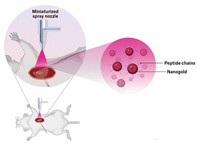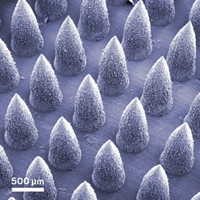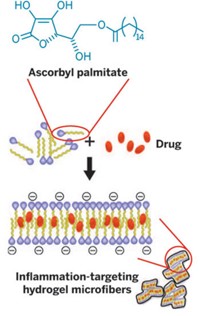Advertisement
Grab your lab coat. Let's get started
Welcome!
Welcome!
Create an account below to get 6 C&EN articles per month, receive newsletters and more - all free.
It seems this is your first time logging in online. Please enter the following information to continue.
As an ACS member you automatically get access to this site. All we need is few more details to create your reading experience.
Not you? Sign in with a different account.
Not you? Sign in with a different account.
ERROR 1
ERROR 1
ERROR 2
ERROR 2
ERROR 2
ERROR 2
ERROR 2
Password and Confirm password must match.
If you have an ACS member number, please enter it here so we can link this account to your membership. (optional)
ERROR 2
ACS values your privacy. By submitting your information, you are gaining access to C&EN and subscribing to our weekly newsletter. We use the information you provide to make your reading experience better, and we will never sell your data to third party members.
Materials
Dispersing Nanotubes Renders Them Nontoxic
Mouse study indicates that nanotube aggregates, not individual tubes, lead to pulmonary toxicity
by Bethany Halford
April 19, 2010
| A version of this story appeared in
Volume 88, Issue 16
Because of their extremely large aspect ratio—the ratio of length to diameter—single-walled carbon nanotubes have been likened to asbestos in their ability to infiltrate and irritate the lungs. But researchers at Northwestern University contend that the comparison is incorrect. SWNT pulmonary toxicity, they say, arises from aggregates of the nanomaterial, not individual tubes (Nano Lett., DOI: 10.1021/nl9042483). SWNTs tend to exhibit their desirable physical properties when dispersed, so a team led by G. R. Scott Budinger, Mark C. Hersam, and Gökhan M. Mutlu decided to compare the toxicity of nanotube aggregates with that of nanotubes dispersed in the biocompatible block copolymer Pluronic F 108NF. They found that mice exposed to aggregates of the nanomaterial developed an inflammatory reaction leading to mild fibrosis in the large airway after 30 days. In mice treated with dispersed SWNTs, however, macrophages gradually cleared the material, and no toxicity was observed. This method of biocompatible dispersion should allow SWNTs “to be safely stored, handled, and transported for use in commercial or biomedical applications,” the researchers note.





Join the conversation
Contact the reporter
Submit a Letter to the Editor for publication
Engage with us on Twitter